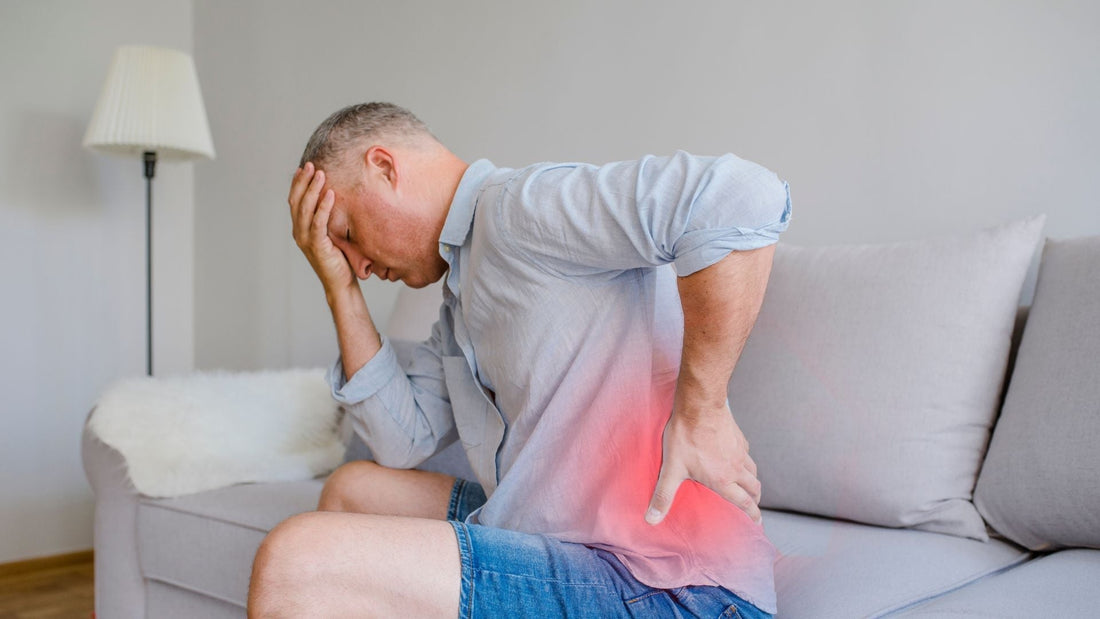
Red Light Therapy for Pain Relief
Chronic pain is one of the leading health challenges in Australia, affecting millions of people every year. From sore muscles and stiff joints to back pain and arthritis, pain can interfere with everything, sleep, work, mobility, and overall quality of life.
Conventional treatments such as medications, steroid injections, and surgeries are often prescribed, but they may bring side effects, limited effectiveness, or invasive recovery periods. This has led many researchers and clinicians to explore non-invasive, natural alternatives, one of the most promising being Red Light Therapy (RLT).
What Is Red Light Therapy?
Red Light Therapy, also referred to as photobiomodulation, uses low-level wavelengths of red and near-infrared (NIR) light to stimulate healing at the cellular level. Unlike topical creams or heat packs that act only on the surface, RLT penetrates into muscles, joints, and connective tissues.
At a biological level, RLT has been shown to:
-Increase ATP production (cellular energy), aiding repair and regeneration .
-Enhance blood circulation, improving oxygen and nutrient supply.
-Reduce oxidative stress, lowering inflammation.
-Stimulate collagen synthesis, supporting joint and muscle health.
This makes RLT unique in that it doesn’t just provide temporary relief — it encourages the body to heal and restore function.
Red Light Therapy and Muscle Recovery
One of the most exciting applications of red light therapy is in muscle recovery and sports performance. Exercise, particularly high-intensity or resistance training, causes microscopic damage to muscle fibres, which then need time to repair and adapt. This repair process is essential for strength and endurance gains, but it often comes with soreness, fatigue, and temporary loss of performance.
Clinical research has shown that RLT can significantly accelerate recovery by:
-Reducing delayed onset muscle soreness (DOMS) after exercise.
-Increasing circulatory oxygen availability, helping muscles clear lactic acid more efficiently.
-Enhancing muscle repair and regeneration, shortening recovery times.
-Improving strength and endurance outcomes when used alongside regular training.
For example, a meta-analysis published in the Journal of Athletic Training found that athletes using red light therapy before or after workouts reported reduced muscle soreness and improved performance markers compared to placebo groups. Another randomized controlled trial in Lasers in Medical Science demonstrated that participants recovered muscle strength more quickly after strenuous exercise when RLT was applied.
This makes RLT particularly appealing not only to elite athletes but also to everyday fitness enthusiasts looking for safe, natural ways to stay active and recover faster.
Everyday Applications for Pain Relief
Muscle Recovery and Athletic Performance
Several studies show that RLT reduces delayed onset muscle soreness (DOMS) and accelerates recovery after exercise. Athletes using RLT report faster return-to-play times and improved performance .
Back and Neck Pain
Research published in the Pain Research and Management Journal highlights significant reductions in chronic lower back pain with consistent RLT use, as blood flow and muscle relaxation improve .
Joint Pain and Stiffness
RLT has demonstrated measurable benefits in reducing stiffness and improving mobility in both healthy adults and those with degenerative joint conditions. Clinical trials have shown reduced pain scores and increased range of motion after sessions .
Chronic Inflammation and Nerve Pain
Photobiomodulation has been studied for its role in calming overactive immune responses. Evidence suggests it reduces pro-inflammatory cytokines while boosting antioxidant defences, a promising mechanism for conditions driven by inflammation .
Red Light Therapy for Arthritis and Chronic Pain Conditions
While RLT can be applied to general pain, some of the strongest research focuses on arthritis and long-term musculoskeletal conditions:
-Osteoarthritis: Multiple clinical trials between 2015–2018 found that RLT reduced pain and improved function in knee osteoarthritis patients compared to placebo groups. A 2018 Brazilian study showed combining exercise with RLT provided greater benefits than exercise alone.
-Cartilage Regeneration: A 2017 study published in Lasers in Medicine reported enhanced cartilage regeneration in animal models, suggesting RLT may address root causes rather than just symptoms.
-Meniscal Tears: A European trial in 2013 concluded that light therapy significantly reduced pain in patients with meniscal injuries, compared to placebo.
-Rheumatoid Arthritis: A meta-analysis in The Journal of Rheumatology noted up to 70% pain reduction and improved joint flexibility in patients treated with red light.
-Spinal Conditions: Research in Lasers in Medical Science (2016) found that combining stretching with RLT in patients with ankylosing spondylitis was more effective than stretching alone.
These studies highlight not only pain reduction but also functional improvements, such as increased mobility, reduced stiffness, and improved daily activity levels.
Why Red Light Therapy Stands Out
-Non-invasive: No needles, no surgeries, no downtime.
-Drug-free: Avoids long-term side effects linked to medication.
-Evidence-based: Supported by decades of clinical trials.
-Whole-body benefits: Addresses pain while also improving cellular health, circulation, and tissue repair.
The Bottom Line
The growing body of research on Red Light Therapy shows it to be a safe, effective, and natural tool for managing pain. From muscle recovery and joint stiffness to arthritis and chronic inflammation, RLT offers a science-backed alternative to traditional pain relief methods.
As more clinical studies continue to validate its effectiveness, RLT is emerging as a powerful option for those seeking long-term relief and improved quality of life.